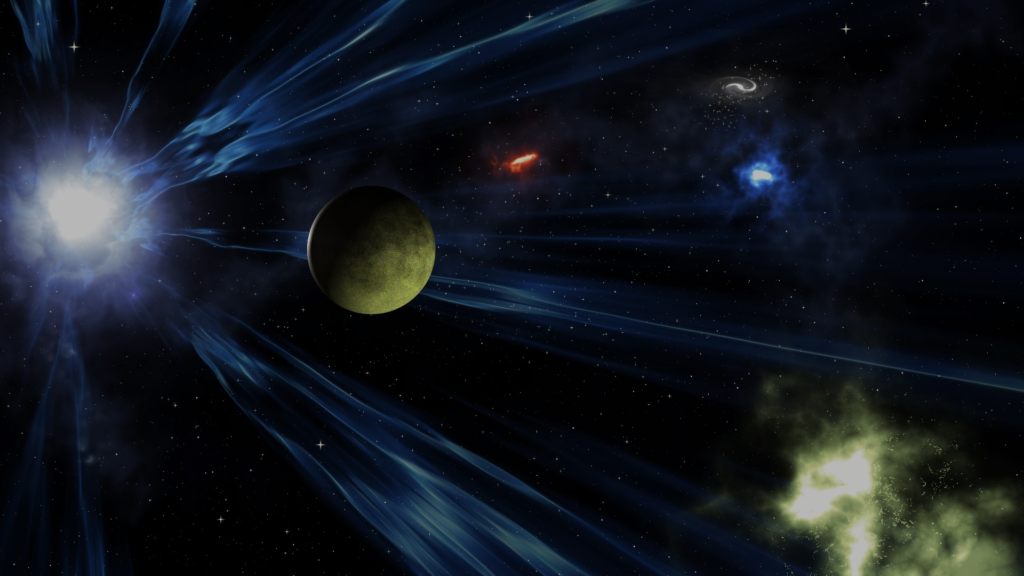## A Journey Through the Milky Way Galaxy: Its Structure and Wonders
Have you ever looked up at the night sky and felt a sense of awe, wondering about the vastness of space and the countless stars twinkling above? That breathtaking sight is just a glimpse of our own incredible home: the Milky Way Galaxy. Forget the blurry smudge you might see on a dark night – the Milky Way is a swirling city of stars, gas, dust, and mysterious dark matter, teeming with life (or at least, the potential for it). Join us on a journey to explore its majestic structure and uncover some of its most fascinating wonders!
### 1. A Cosmic Spiral: Unveiling the Milky Way’s Structure
Imagine a giant, spinning pinwheel – that’s a pretty good analogy for our galaxy. The Milky Way is a spiral galaxy, meaning its stars, gas, and dust are arranged in a rotating disk with spiral arms winding outwards from a central bulge. This bulge, located at the galaxy’s heart, is packed with older, redder stars. Surrounding the disk is a vast, spherical halo containing globular clusters – dense collections of hundreds of thousands of ancient stars.
The spiral arms, where star formation is most active, are regions of higher density. Think of them as galactic traffic jams, where stars, gas, and dust clump together. Our Sun resides within one of these arms, the Orion Arm, located about two-thirds of the way out from the galactic center. It takes our solar system around 230 million years to complete one orbit around the Milky Way’s center – that’s one galactic year!
### 2. Stellar Nurseries and Galactic Recycling: The Life Cycle of Stars
The Milky Way is a bustling hub of stellar activity. Within the spiral arms, giant molecular clouds – vast regions of cold gas and dust – collapse under their own gravity, triggering the birth of new stars. These stellar nurseries are incredibly dynamic, with intense radiation and powerful stellar winds shaping the surrounding environment.
As stars age and die, they release heavy elements back into the interstellar medium, enriching the gas and dust clouds for the next generation of stars. This continuous cycle of stellar birth, life, and death is crucial for the galaxy’s evolution. Massive stars, living fast and dying young, end their lives in spectacular supernova explosions, scattering elements throughout the galaxy – some of the iron in your blood was likely forged in a supernova billions of years ago!
### 3. The Mysterious Heart of the Galaxy: Sagittarius A*
At the very center of the Milky Way lies a supermassive black hole, designated Sagittarius A* (pronounced “Sagittarius A-star”). This behemoth, weighing millions of times the mass of our Sun, exerts a powerful gravitational influence on the surrounding stars, causing them to orbit at incredible speeds. Although we can’t directly see the black hole itself (because nothing, not even light, can escape its gravitational pull), we can observe its effects on nearby stars and gas.
The existence of Sagittarius A* and similar supermassive black holes at the centers of other galaxies is still a subject of intense research. How they formed and how they influence galactic evolution are fundamental questions in modern astrophysics.
### 4. Beyond the Stars: Dark Matter and the Galaxy’s Halo
While we can see the stars, gas, and dust that make up the visible parts of the Milky Way, a significant portion of our galaxy remains invisible. This is known as dark matter, a mysterious substance that interacts with ordinary matter primarily through gravity. We know dark matter exists because of its gravitational effects on visible matter, but its exact nature remains one of the greatest unsolved mysteries in science. It’s believed to form a vast halo extending far beyond the visible disk of the Milky Way.
### Conclusion: A Galaxy of Wonders Awaits Exploration!
The Milky Way is a breathtakingly complex and dynamic system, filled with wonders that continue to fascinate and inspire scientists and stargazers alike. From the birth and death of stars to the mysterious influence of dark matter, there’s still so much we don’t know about our galactic home. So, grab your telescope (or simply your eyes on a clear night!), and start your own exploration of the Milky Way! Share your thoughts and questions in the comments below – we’d love to hear from you! And don’t forget to look up and appreciate the incredible universe we live in!


